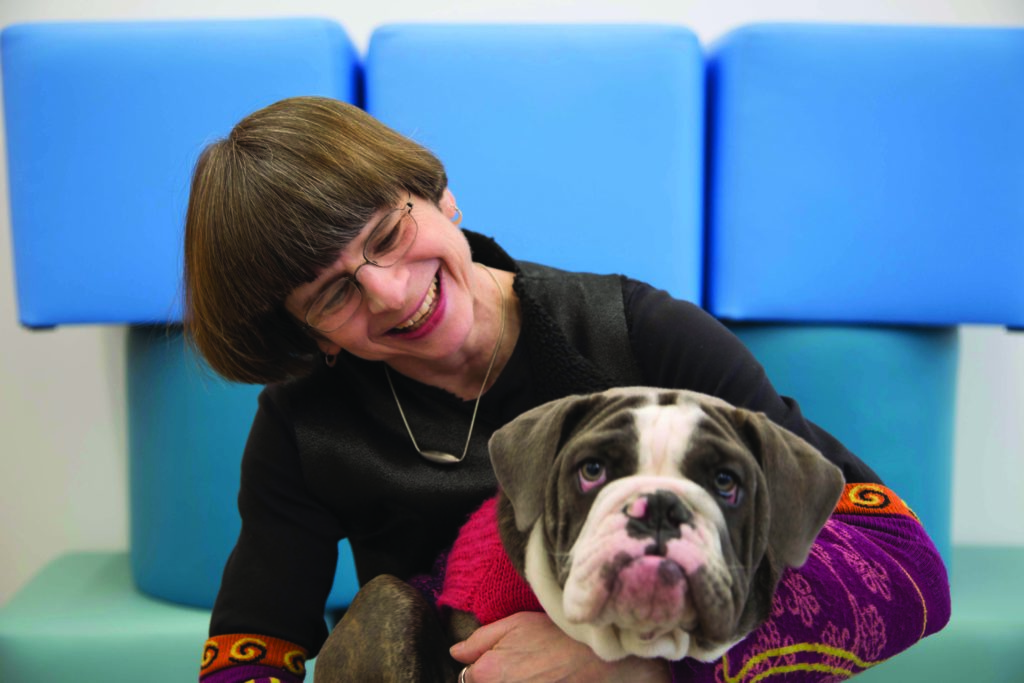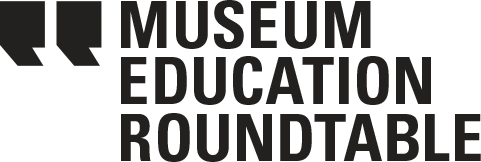4×4: Strategy and Strategic Foresight with Elizabeth Merritt
Our “4 x 4” interview blog format aims to incorporate multiple perspectives on current topics in our field by inviting four thought leaders to answer four questions related to a chosen theme. Check out interviews around the first theme of “self-care” as seen through the lenses of nature, parenthood, networking, and equity work.
For our next round of 4×4, we have chosen to look into the theme of strategy as we embark on our next round of strategic planning as an organization. We turn first to Elizabeth Merritt, Vice President for Strategic Foresight at the American Alliance of Museums (AAM). She is also founding director of the Center for the Future of Museums at AAM, from which she runs an outstanding blog that provides many resources to anyone curious about preparing for and shaping the destiny of museum work. Elizabeth took time to answer questions from MER’s board member Michelle Dezember about how she thinks about the future.

Michelle Dezember: Why do you think strategic thinking and planning are important?
Elizabeth Merritt: Our natural human inclination, in the absence of planning, is to amble along in the general direction we’re already headed. Quite often that path leads somewhere we don’t actually want to go. Strategic thinking helps us correct our course, nudging organizations (and the outside world) towards a more desirable future.
The Alliance’s Accreditation Commission established a standard regarding institutional planning in 1999 because three decades of data from the program showed that good planning was a prerequisite for success. But they also observed some museums struggling over time with some fundamental challenges despite having what looked, on paper, like credible plans. On deeper examination, those plans were only appropriate for the moment in which they were written. Five years on, they were already out of date. The Alliance launched the Center for the Future of Museums in 2008 to help museums learn to create flexible, responsive plans that would position them for success in a rapidly changing world.
Michelle: How do you plan for blind spots and the unexpected?
Elizabeth: One way to avoid blind spots is through what futurists call scanning. This is the process of using a structured, ongoing search for information to identify and monitor change, and anticipate disruption. Good scanning helps us notice relevant information we might otherwise overlook by casting a wide net, incorporating both mainstream sources (newspapers, journals, books, research) and more fringe sites such as blogs, social media, and pop culture.
When we are surprised by the unexpected, it’s either because we didn’t notice something sneaking up on us, or because of sudden, disruptive events. Foresight armors us against surprise in two ways. We can deal with sneaky change through tracking trends—gradual, incremental change with discernable patterns. So, for example, there is a lot of data showing that charitable giving in the US is moving towards fewer donors, larger gifts. Knowing that might prompt a museum to work harder to cultivate the next generation of donors.
By their very nature, disruptive events can only be anticipated to a limited extent. However, we can focus on what we do know—usually when a certain kind of event will happen, or what will happen (rarely both). For example, geologists assure us that there is going to be a major earthquake along the San Andreas fault at some point in the future—it could be next year, it could be a hundred years from now. (Their best bet is “sometime before 2032.”) But we have pretty good modelling of the effects. Museums can prepare by retrofitting their buildings to be earthquake resistant, creating emergency preparedness plans, and drilling staff on response. On the other hand, we know exactly when the next presidential election will take place, but we don’t know the outcome. Museums can think about how the policies likely to be advanced by different administrations would affect their operating environment, and how they could thrive no matter who is elected.
Michelle: In addition to being the Founding Director of the Center for the Future of Museums, your title at AAM is Vice President for Strategic Foresight. What is strategic foresight, and how is it different from strategic planning?
Elizabeth: If you focus only on foresight, you risk being like Cassandra, the prophet in Greek mythology who no one ever believed. Being right is no consolation if your spot-on observations don’t make a difference. Strategic planning puts those observations to good use.
Foresight helps us notice how the world is changing, identify trends and potential events that could have a profound impact on our work, and broaden our thinking about what the future might be. Foresight’s essential partner is insight—knowing the organization, and knowing what it wants to achieve. What are the organization’s goals—what difference does it want to make in the world? What resources can it bring to bear on this work? Organizational leaders can combine foresight with insight to create an effective strategic plan.
Michelle: Do you think foresight skills are more nature or nurture? How could our readers hone these skills?
Elizabeth: Now you’ve activated my inner biology geek! Using Functional Magnetic Resonance Imaging, researchers have shown that particular areas of our brain are activated when we think about the future. Biologically, we are wired for foresight. However, it turns out that this ability only kicks in when we can truly envision and empathize with our future selves. That takes training. One of the major goals of CFM is to help museum people acquire the basic skills needed to think about the future—whether through following the CFM Blog (including our Futures Studies 101 series), or working through the exercises in TrendsWatch: The Scenario Edition. I’m giving a half-day workshop at AAM’s Annual Meeting & MuseumExpo this spring, teaching attendees some basic foresight exercises they can use in their own work. For people interested in a deeper dive, I recommend the week-long professional certificate course in strategic foresight offered twice a year by the University of Houston. That course was my introduction to futures studies, and it was a great launching point for my continuing education in the field.
Elizabeth Merritt is AAM’s Vice President for Strategic Foresight, and founding director of the Center for the Future of Museums–a think-tank and research and development lab for the museum field. She is the author of the Alliance’s annual TrendsWatch report, and writes and speaks prolifically on the trends shaping the future of nonprofit organizations. (M.A. Duke University, B.S. Yale University, Museum Management Institute).
Michelle Dezember is an independent arts programmer and museum professional and serves on the Board of Directors for the Museum Education Roundtable.

